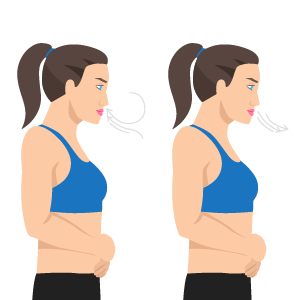Healthy Living
Life Hack: Simple Exercises To Help Improve Blood Pressure
We often associate exercise with high-impact, dynamic movements, but did you know there’s power in stillness? A British Journal of Sports Medicine study suggests that two isometric exercises, planks and wall squats, may be highly effective in lowering blood pressure. Isometric exercises, also known as static exercises, are done without moving a joint. They’re performed by keeping a static position and tension on the muscle.
Doing these exercises over time was associated with a greater reduction in blood pressure than weight training, aerobic-exercise training or high-intensity interval training. Since isometric exercises can be performed using only body weight, they’re generally accessible to anyone.
Of course, this doesn’t mean you should do only wall squats and planks, as other types of exercises are also associated with lowering blood pressure. Consider adding isometric exercises to your workout routine for a convenient and efficient way to enhance muscle strength and stability and ultimately, lower blood pressure. Performing the following exercises three times a week will be a great start.
How To Do a Plank
- Get into a push-up position on the floor. Ease down to place your forearms on the floor with your elbows beneath your shoulders. Your body should form a straight line from your head to heels.
- Keep your neck at a neutral position. Fixing your eyes on the floor a few inches in front of your hands may help.
- Draw your belly button towards your spine to engage your core muscles. Doing this will help stabilize your spine. Your lower back should not sag.
- Hold this position and start with a 10- to 20-second interval. Keep your body straight and avoid sticking your buttocks up or letting your hips sag. Increase your duration as you become more comfortable with planking.
- Breathe naturally while planking. Don’t hold your breath.
- Repeat the planks for a few sets, gradually increasing your hold duration as you build up your strength and endurance over time.
 How To Do a Plank
|
How To Do a Wall Sit
- Stand with your back against the wall. Place your feet about hip-width apart.
- Slowly slide your back down the wall as you bend your knees to a 90-degree angle, like sitting on an invisible chair.
- Ensure your knees stay directly above your ankle and do not extend past your toes. Doing this helps prevent stress on your knees.
- Keep your back straight against the wall and your spine in a neutral position.
- Hold this position for up to 20 to 30 seconds. Make sure your knees remain aligned and steady and don’t collapse inward.
- Breathe naturally while wall sitting. Avoid holding your breath.
- Rest for a moment and repeat the exercise for a few sets.
 How To Do a Wall Sit
|
How To Do Proper Breathing Exercises
A study published by ScienceDirect suggested that breathing exercises may help reduce blood pressure in patients with hypertension. Another study published by Nature Portfolio suggested that breathwork may help protect against Alzheimer’s disease.
Here’s how to perform a simple yet beneficial breathing exercise:
- Inhale slowly for five seconds, focusing on expanding your lungs.
- Exhale slowly for the same duration.
- Do this for 20 minutes a few times a week.

|
Remember that any exercise can be challenging, especially if you’re new to it. So don’t worry if you can’t hold the position for very long at the beginning. Always maintain a proper form when doing these exercises. Consult with your doctor before starting any new workout regimen.
Note that while exercise takes center stage, a holistic approach is key – nurturing a healthy lifestyle can ultimately help maintain optimal BP levels. It’s a dynamic duo of mindful movement and healthy living that can pave the way to a healthier you!
Sources:
BBC
British Journal of Sports Medicine
CNN
Forbes
National Library of Medicine
ScienceDirect

